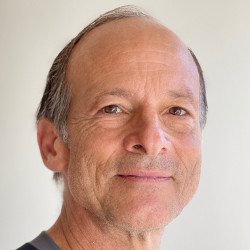
I would have been shocked (and frankly, still quite am) if someone told me at the start of my career that I would one day lead a team of medical residents at the University of California, be granted tenure at Stanford University, build a philanthropic product development effort at the Bill and Melinda Gates Foundation, and start a Global Health Institute at Stony Brook University. So how is it I’ve done all those things, and now I’m deeply immersed in the application of AI/ML to improve peoples’ health—a domain I know next to nothing about?
I will not dispute the role of luck but in the words of Louis Pasteur, “chance favors the prepared mind.” For me, part of being prepared has meant having a willingness to work across disciplines, which in turn has led me to the world of computing. Over the decades it’s come to play a prominent role in so many aspects of my work and life.
In the late 1970s, solving engineering problems involved submitting stacks of punch cards to the desk at the computer center and subsequently checking my bin for the output. Years later, I was analyzing the DNA fingerprints of thousands of strains of bacteria, all thanks to a computerized image analysis! And now I’m working in the ubiquitous field of AI/ML to advance various aspects of the practice of medicine.
So, what have I learned that might be helpful in preparing aspiring computer scientists to lead impactful and meaningful professional lives?
Focus on timely and significant issues. I graduated from medical school and moved to San Francisco just as a new disease was emerging among gay men that also intersected with TB, a disease of antiquity. My mentors at the time pointed out just how big of a public health threat this was going to be and, together, we made confronting this covergence the focus of our work.
Exploit every opportunity to pursue excellence. I suspect I was admitted to Princeton University because they had relatively few applicants from the South and did not know that at my high school you got an “A” for attendance. But for me, it was an opportunity to be connected to incredibly talented people—many of whom remain great sources of inspiration to this day.
Find new technologies that are fundamentally changing scientific paradigms. We live in a world where technologies are changing at an exponential pace and opening novel opportunities for scientific advancement. Armed with an unprecedented opportunity to track specific strains of M. tuberculosis as they moved through populations, I was part of a quantum leap in our understanding of TB … and annual publications in the New England Journal of Medicine for four years, which was key in establishing my credibility as a young academic.
Seek to match the magnitude of the problem to the magnitude of the response. Rather than pursue a predictable academic life, I ignored my Dean’s advice and became the ninth technical hire at the Bill and Melinda Gates Foundation, where I had the opportunity to shift from “what can we do?” to “what should we do?” For 10 years, my team spent what it took to develop improved approaches to TB care and control.
So how does all of this culminate in me accepting the role of Chief Medical Officer of Hyfe, a high growth AI/ML based startup? On closer inspection, it’s for all the reasons stated here—and the timeliness of cough in the Covid era. The value of empowering patients with the data they need to drive their own health care, and the rate at which mobile phone-based technology can scale. I want to be central in ensuring a future in which every smartphone in low- and middle-income countries will be a lifesaving medical device.
But even if successful, I suspect the focus of my next job will be something entirely different and equally as exciting.




Join the Discussion (0)
Become a Member or Sign In to Post a Comment